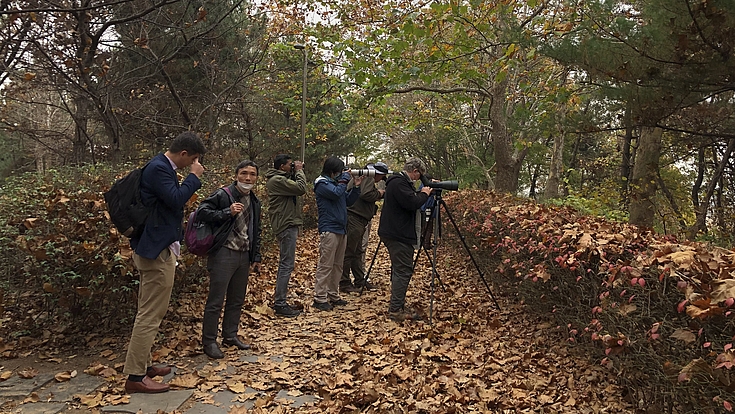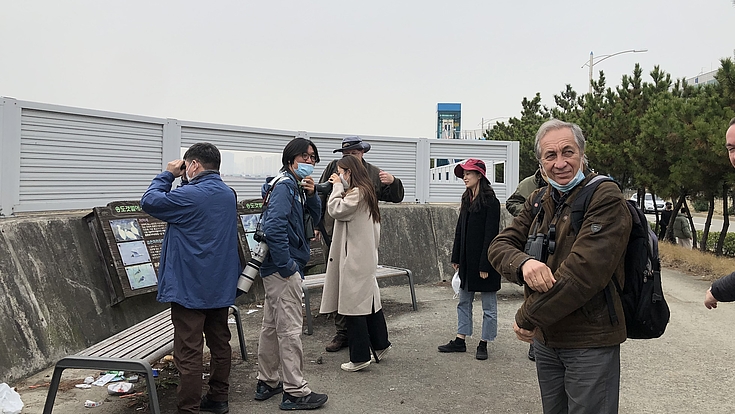Events
Visiting the Sorae Estuary and Namdong Reservoir Wadden areas

After the project’s schedule in Suncheon ended, all participants departed with the bus to Incheon on November 22nd in order to observe the habitat of diverse bird species in the afternoon. Interesting scenes were observed, for instance, an attack of a crow on a duck. The birdwatching in Incheon took place from the afternoon until 6 pm on the 22nd of November. The Wadden areas of Sorae Estuary and Namdong Reservoir were visited, and the tour took place under the lead of Dr. Bernhard Seliger. The Wadden Areas are located near South Korea’s Yellow Sea coastal area.
The Yellow Sea is bordered by three countries, P.R. China, North Korea (DPRK), and South Korea (ROK). It is a bottleneck in the East-Asian Australasian Flyway, with up to 50 million birds annually using the area for wintering, breeding, or (mostly) stop-over. This makes it one of the most important bird areas worldwide; at the same time, this flyway has the highest share of endangered species among all the flyways. This is due to intense development pressure and dense habitation of the area. South Korea alone lost the last 80 years up to 75 percent of its tidal flat areas due to reclamation. China which started slowly with reclamation, since 1980s saw a dramatic increase in reclamation. North Korea had also continuous reclamation work done, though due to the lack of heavy machinery the progress is slow. China and South Korea by now stopped reclamation completely, and South Korea even started timid attempts to reverse reclamation in one or two pilot projects. North Korea however is going on with reclamation.

In the last decade, a number of attempts have been made to not only stop reclamation but to protect remaining tidal flat areas as World Heritage. The Yellow Sea working group, with a secretariat of IUCN, EAAFP, and Ramsar Regional Center in Suncheon, was formed, with the agreement of North Korea. In 2021, four getbol sites in South Korea were listed as UNESCO World Heritage Sites due to their outstanding natural properties. Three sites are located on Korea's western coast while one is located on the southern coast. They were listed under the category to "contain the most important and significant natural habitats for in-site conservation of biological diversity, including those containing threatened species of outstanding universal value from the point of view of science or conservation.” In some areas considered for tidal flat inscription, like in Hwaseong, immediate grave threats (airport development, hotel development directly at the most important wetlands) exist. In a current informal meeting with an international group of advisors, including Dr. Hyun-Ah Choi for Hanns-Seidel-Foundation, these advisors gave a rather bleak outlook for Korean tidal flats.
For the Hanns-Seidel-Foundation cooperation with this international advisory group and the Korean authorities is interesting, since it allows to be involved in the idea of the trilateral (China-North Korea – South Korea) work for joint protection of tidal flats in the Yellow Sea, one of the conservation priorities on the East Asian – Australasian flyway.
